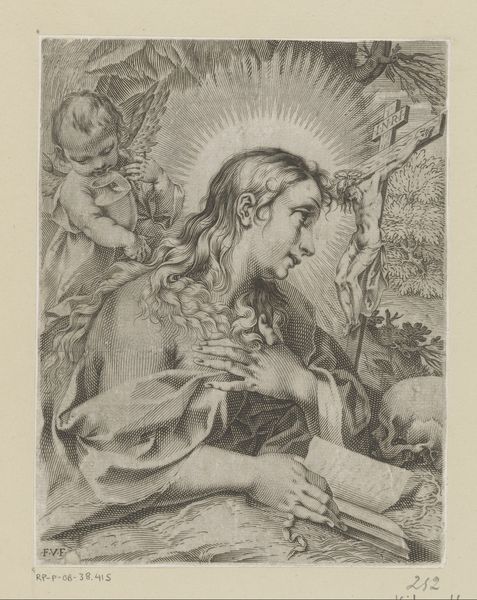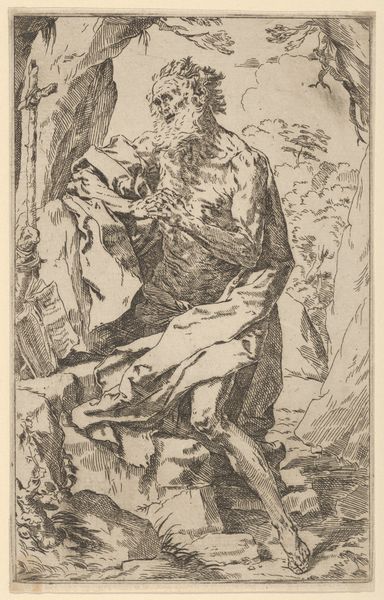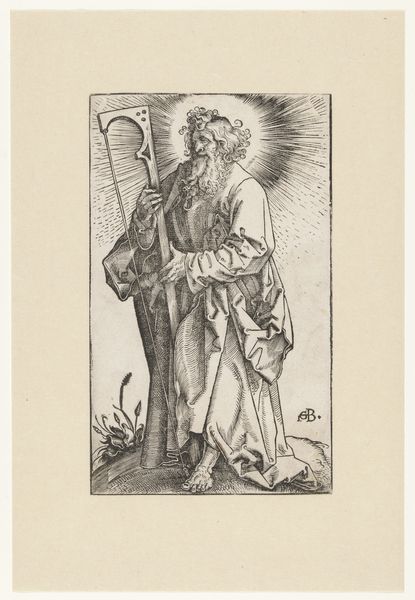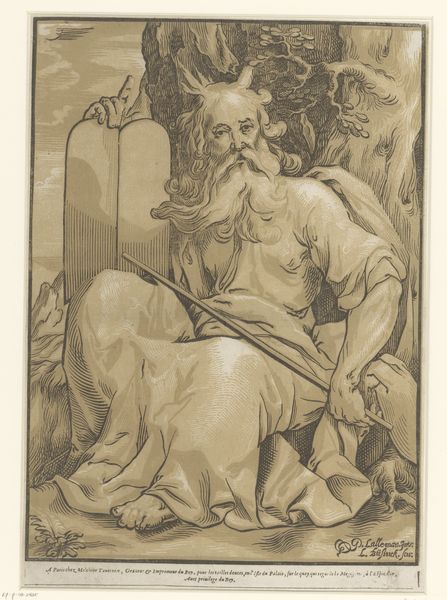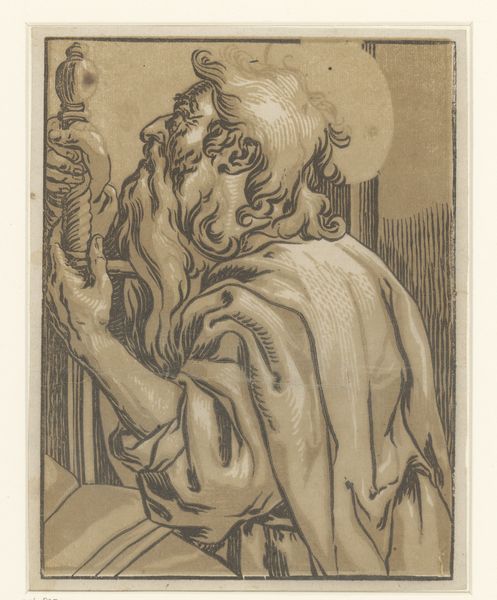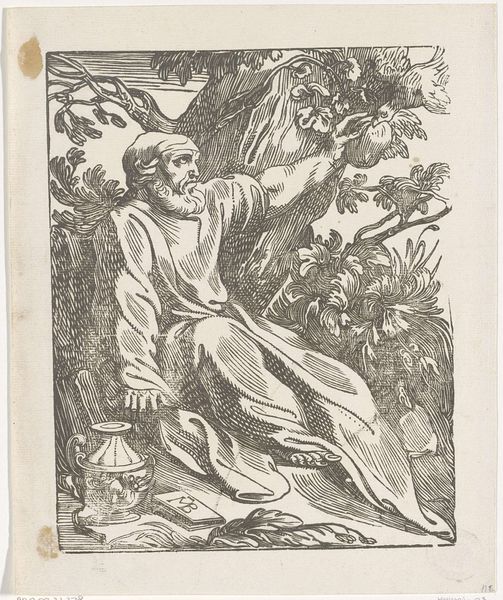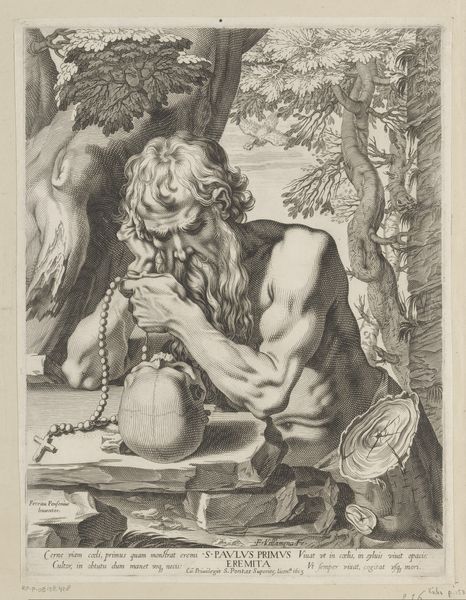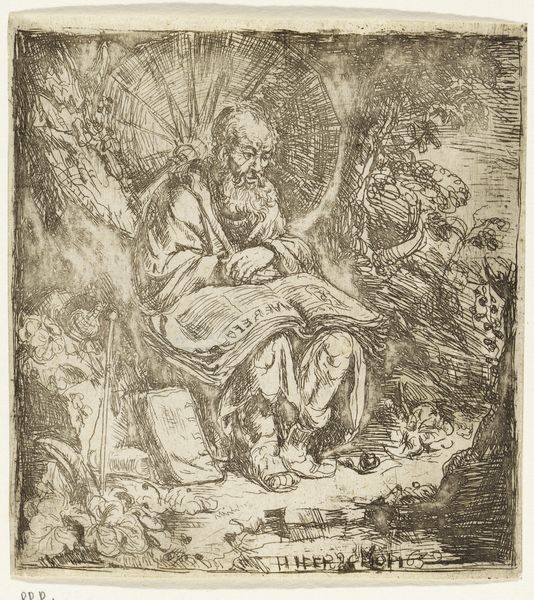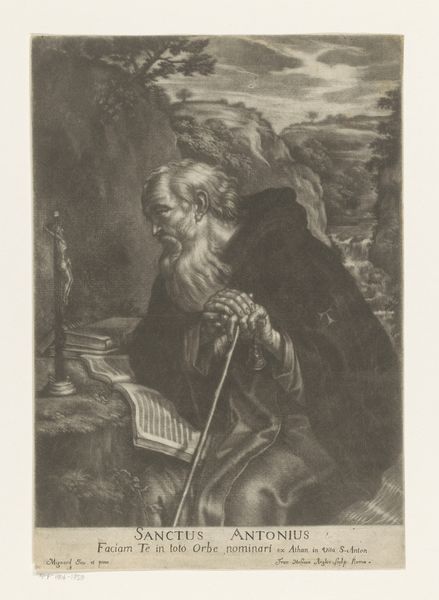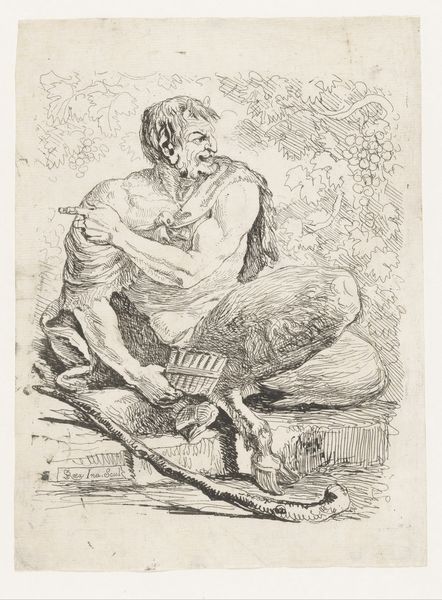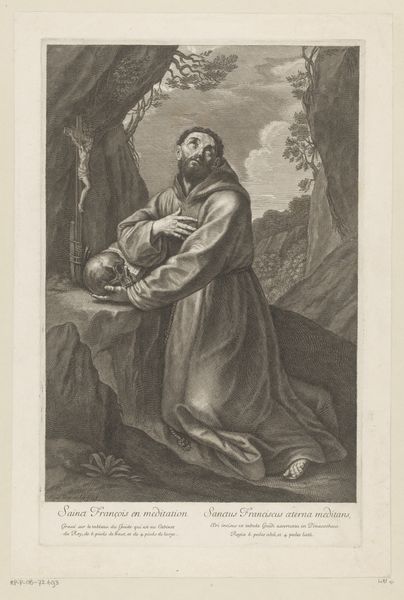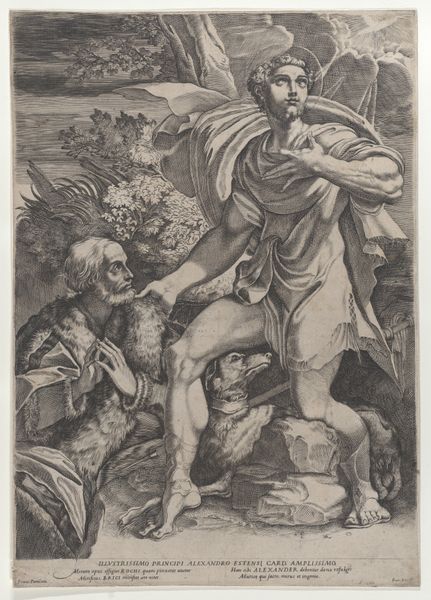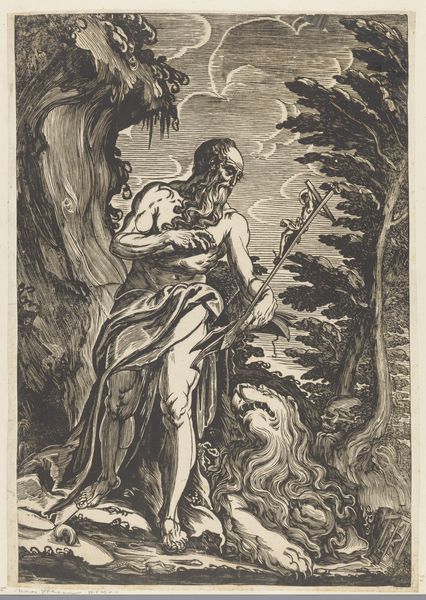
print, intaglio, engraving
#
portrait
#
allegory
#
baroque
# print
#
intaglio
#
old engraving style
#
history-painting
#
musical-instrument
#
engraving
Dimensions: height 218 mm, width 142 mm
Copyright: Rijks Museum: Open Domain
Curator: This engraving captures the figure of the penitent Mary Magdalene. Dating back to somewhere between 1576 and 1624, it's an intriguing piece rendered anonymously using the intaglio technique. Editor: My first thought? Melancholy, but a radiant kind. The light seems to pour from the figure herself, almost a spotlight on her inner world. Curator: Absolutely. Notice the composition – how the light source, presumably divine, emphasizes Magdalene's serene expression amidst the surrounding symbols of mortality and repentance, like the skull, the book, the crucifix, and, above her, the winged child holding an urn. The light radiates so bright it seems to emerge from her. Editor: I find the lines remarkable. They create a textured effect that's almost sculptural. How the engraver captures the flowing of her hair and the drapery with such detail is quite interesting, wouldn't you say? The linear design contributes significantly to the artwork's solemn mood, a kind of sublime gloom. Curator: Definitely, and the use of symbolic objects enriches our understanding of the subject’s story. Mary Magdalene's life has been told over and over. The musical instrument hints to past worldly pleasures she renounced for a life of devotion. There is so much detail! Editor: And let's not ignore the Baroque style, even within this print medium. The emotional intensity and the dynamism expressed through line and form – these are crucial to Baroque aesthetics. Plus the portrait-like pose with allegory is pretty striking! Curator: Indeed, the artist conveys the emotional depth of faith and repentance through formal elements as simple as these precise lines. And they manage to mix life and death as equals with great beauty. Editor: Looking closely, one can begin to sense the layers of symbolism— the artist invites us not only to contemplate beauty, but a sense of divine meaning in a way. Curator: And the artist manages to turn simple medium into a whole life philosophy about morality, sacrifice, and divinity. Editor: Ultimately, a reminder of our own mortal coils, wrapped in a rather stunning package.
Comments
No comments
Be the first to comment and join the conversation on the ultimate creative platform.
